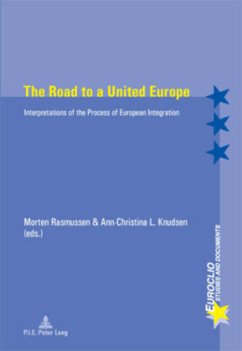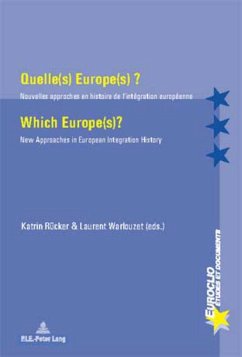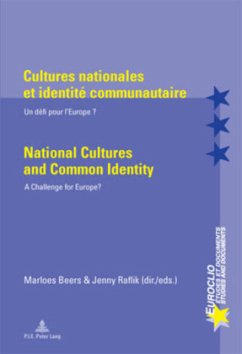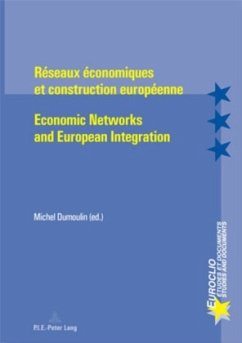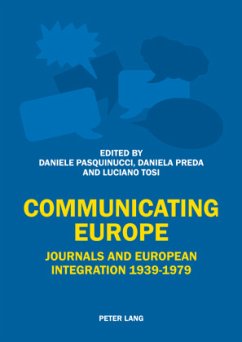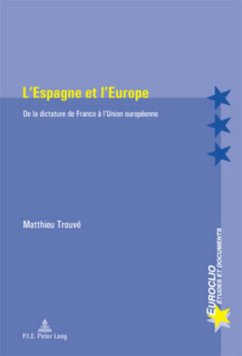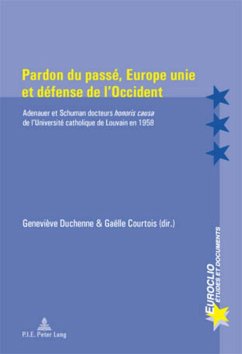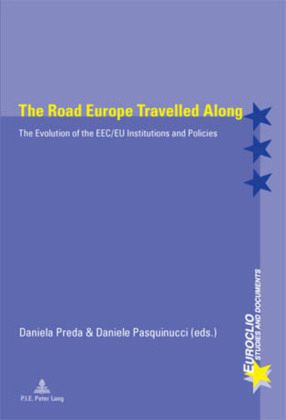
The Road Europe Travelled Along
The Evolution of the EEC/EU Institutions and Policies
Herausgegeben: Preda, Daniela; Pasquinucci, Daniele
Versandkostenfrei!
Versandfertig in 6-10 Tagen
94,35 €
inkl. MwSt.

PAYBACK Punkte
0 °P sammeln!
This volume contains the proceedings of the international conference "The Road Europe Travelled Along. The Evolution of the EEC/EU Institutions and Policies", organized by the Associazione Universitaria di Studi Europei (AUSE) (European Community Studies Association - ECSA Italy) at the University of Siena in May 2008. The editors of this book hope it will contribute to the debate on an interpretative thesis which is widespread among scholars dealing with European integration.This thesis holds that the political and institutional circuit of the European Community/Union should be entirely depen...
This volume contains the proceedings of the international conference "The Road Europe Travelled Along. The Evolution of the EEC/EU Institutions and Policies", organized by the Associazione Universitaria di Studi Europei (AUSE) (European Community Studies Association - ECSA Italy) at the University of Siena in May 2008. The editors of this book hope it will contribute to the debate on an interpretative thesis which is widespread among scholars dealing with European integration.
This thesis holds that the political and institutional circuit of the European Community/Union should be entirely dependent on the nation-states. The immediate implication of this view is that the moments of crisis in the EEC/EU, as well as its periods of "relaunch", are due only to the will of and decisions made by the national states, more specifically their governments.
On the contrary, many of the essays in this book show that community institutions have also played an important role in the developments in the EEC/EU. From this point of view the evolution of the Community, and subsequently of the European Union, can be examined also by analyzing the gradual extension of its area of intervention, and thus through a study of its common policies and actions. Moreover, an interdisciplinary reflection on the rules, procedures and practices behind the community decision-making process would also be very important.
It would be extremely useful to examine the "weakness" or "effectiveness" of the decision-making mechanism, and to reconstruct the historical, political and legal reasons that have led to the evolution of this mechanism in order to have a better understanding of the historical-political path taken over the years by the European Community/Union.
This thesis holds that the political and institutional circuit of the European Community/Union should be entirely dependent on the nation-states. The immediate implication of this view is that the moments of crisis in the EEC/EU, as well as its periods of "relaunch", are due only to the will of and decisions made by the national states, more specifically their governments.
On the contrary, many of the essays in this book show that community institutions have also played an important role in the developments in the EEC/EU. From this point of view the evolution of the Community, and subsequently of the European Union, can be examined also by analyzing the gradual extension of its area of intervention, and thus through a study of its common policies and actions. Moreover, an interdisciplinary reflection on the rules, procedures and practices behind the community decision-making process would also be very important.
It would be extremely useful to examine the "weakness" or "effectiveness" of the decision-making mechanism, and to reconstruct the historical, political and legal reasons that have led to the evolution of this mechanism in order to have a better understanding of the historical-political path taken over the years by the European Community/Union.



